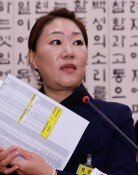The proper title of an ancient Korean king
The proper title of an ancient Korean king
Posted February. 20, 2012 04:00,
This year marks the 1,600th anniversary of the death of Gwanggaeto Taewang (King Gwanggaeto the Greatest). In Korean history books, he is named Gwanggaeto Daewang (King Gwanggaeto the Great) in accordance with records of the ancient Korean history book "Samguksagi (Historical Records of the Three Kingdoms)." Following the hit 2007 drama "Taewangsasingi (The Four Guardian Gods of the King)," historical dramas now call him Gwanggaeto Taewang (King Gwanggaeto the Greatest). As a result, historical dramas are referring to all kings from the ancient Goguryeo Kingdom as Taewang. For this reason, certain people like to rank kings as "Wang (King )," Daewang (King the Great)" and "Taewang (King the Greatest). Critics say "the Great" suffices and call using the title "the Greatest" unnecessary.
Taewang is a rank different from that of Wang or Daewang. This is a title on par with emperor in China and refers to a king ruling an empire and kings, and means "the king of the kings." In China, they would also use Wang to refer to kings, but started to use the title emperor from the Qin Shihuang era by referring to this as the ruler of the ancient Chinese empire. Since then, all kings who reigned over the central region of Chinese territory would call themselves emperor. This practice also existed in the West in that "emperor" or "kaiser" was used as names of rulers of the Roman empire, who took control of Central Europe.
"Gukgangsang Gwanggaeto Gyeongpyeongan Hotaewang" is the posthumous epithet inscribed in the king`s tombstone. A posthumous epithet is given after a king dies. "Gukgangsang" refers to the burial site, while "Gwanggaeto Gyeongpyeongan" means "to expand territorial area and bring about peace and prosperity" to describe his achievements. Hotaewang means "good taewang." His tombstone records suggest that he was called Wang while preparing for conquest and Taewang when the conquest was complete. They never called kings Taewang in the Goguryeo Kingdom before Gwanggaeto. This is evidence that they clearly differentiated Gwanggaeto from other kings with the title Wang. Taewang was also used to call King Jingheung of the Shilla Dynasty after he became the dominant leader of the Three Kingdoms.
Last week, the international conference "Goguryeo Gwanggaetowang and East Asia" was hosted in Seoul by the Society for Korean Ancient History. Professor Rue Xin of Peking University claimed that Gwanggaetowang should be called "Yeongnakdaewang." Yeongnak is the name of the era Gwanggaeto would use. An era name is the name for the period of a king`s rule. This looks okay when the conclusion is considered only. Rue claimed, however, that Yeongnak was not an era name, but was only the name of the king before his death, and that Taewang was the general title for all kings as officials in the Goguryeo Kingdom. The professor unscrupulously downplayed the meaning of Taewang. To not call an undisputed Taewang as such is wrong, and reversely spreading the use of Taewang to all Goguryeo kings is abuse of the title.
Kwon Jae-hyeon (confetti@donga.com)
Headline News
- Seoul thinks about providing extra 155mm shells to Ukraine
- Hyundai to launch first locally produced electric vehicle in India
- Buddhist ceremony honors the sacrifice of heroes in uniforms
- Xi sends reply to Kim, omitting the phrase ‘friendly neighboring country’
- Son scores his third EPL goal of the season







